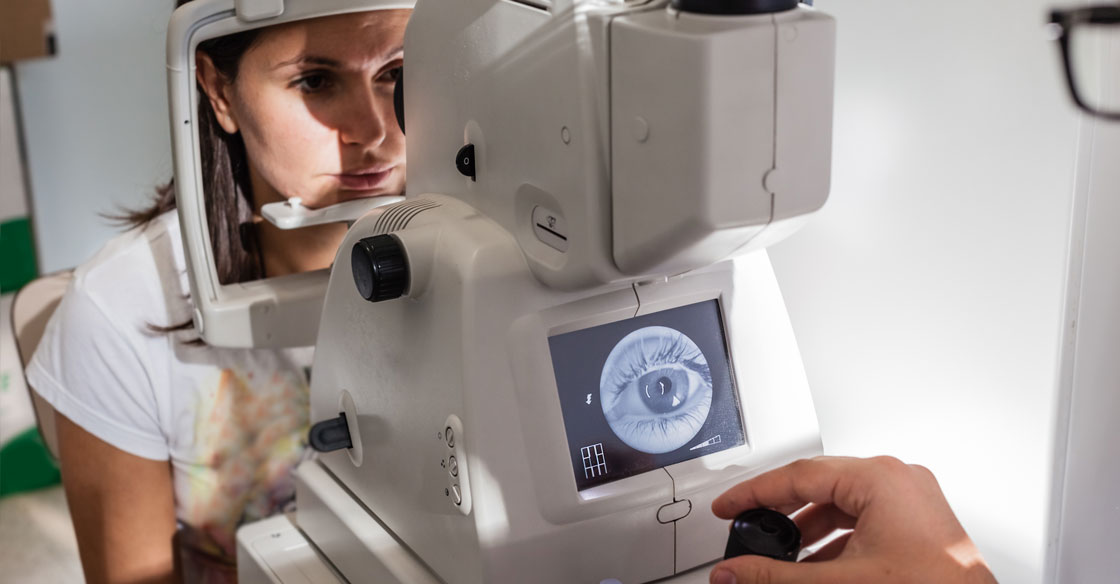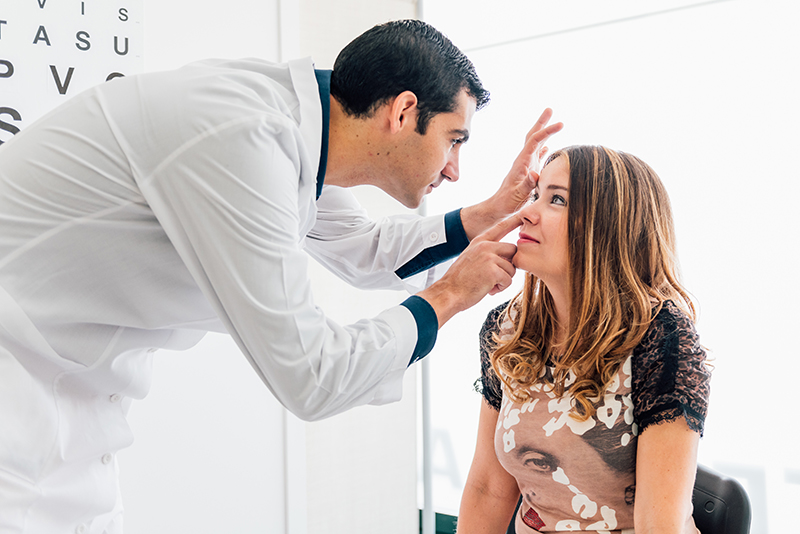Vision Impairment Due to Age – What You Need to Be Aware Of

If you are over the age of forty, you might have noticed that you need to hold the newspaper at a distance to read the small print. Or maybe that sign on the highway you always pass has begun to get a little blurry over the years. These are the first signs of vision impairment due to age but don’t worry; it’s not the beginning of the end for your eyesight. By booking a regular eye exam and being attentive to the early signs of eye disease, you can retain a clear vision throughout your lifetime.
The Six Most Common Age-Related Types of Visual Impairment
1. Glaucoma
The optic nerve is what transmits messages from the eye to the brain. When fluid builds up in the eye, too much pressure is on the optic nerve, cells begin to die, and the patient loses their peripheral sight.
Even though people over 60 have a higher risk of contracting glaucoma; it is a very common and very misunderstood. In fact, contrary to poular belief, anyone can have it. If you have a family history of glaucoma, are of African-American or Hispanic ancestry, or have high blood pressure or diabetes, you should be tested for glaucoma. Glaucoma is mostly treated with medication.
2. Cataracts
As we age, the lenses in our eyes start losing their elasticity and may become cloudy. These cloudy lenses are called cataracts, and the only way to repair your vision is through surgery. It is estimated that half of Americans develop cataracts by the time they are 75 years old.
3. Age-Related Macular Degeneration (AMD)
The macula is a small area of the retina responsible for sharp, central vision. When you suffer from AMD, you will have trouble with detail-orientated tasks such as reading, writing, and driving. There is no cure for AMD, although a healthy diet including leafy greens, fish, and vitamins can slow down the progression of the disease significantly.
4. Diabetic Eye Disease
Diabetes damages the blood vessels of the retina and can also damage the nerves that control eye muscles. Diabetic eye disease is irreversible and can lead to complete blindness. If you have diabetes, it is essential to control your blood sugar and cholesterol levels to prevent vision impairment.
5. Dry-Eye Syndrome
As people age, their tear production reduces. In severe cases, it can cause your eyes to burn and feel scratchy. This is usually not a serious condition and can be treated with over-the-counter eyedrops from your local pharmacy or eye specialist.
6. Low Vision
Low vision is vision impairment that can’t be corrected with spectacles, contact lenses or surgery and is usually found during an advanced age in people with other eye diseases. Although there is no cure for low vision, magnifiers and software with text-to-speech capabilities are a great help.
Warning Signs of Age-Related Eye Diseases
If you notice sudden vision changes or think you have any of the following eye symptoms, don’t delay consulting your optometrist:
- Blurred vision when reading at a normal distance
- Frequent headaches or eye strain
- Straight lines appear wavy or distorted
- Color perception that is diminished or changed
- Difficulty seeing at night
- Seeing halos around lights
- Excessive light sensitivity
- Double vision in one eye
- Spots floating in your vision
- Empty areas or dark areas in your vision
- Pain, discomfort or dryness in your eyes or eyelids
At Eyelux Optometry we take extra care to prevent vision impairment due to age, which is why we include Digital Retinal Imaging (DRI) during a senior eye care exam. DRI not only determines the health of your eyes but can also help with the early detection of diseases such as high blood pressure, cholesterol, and diabetes.


